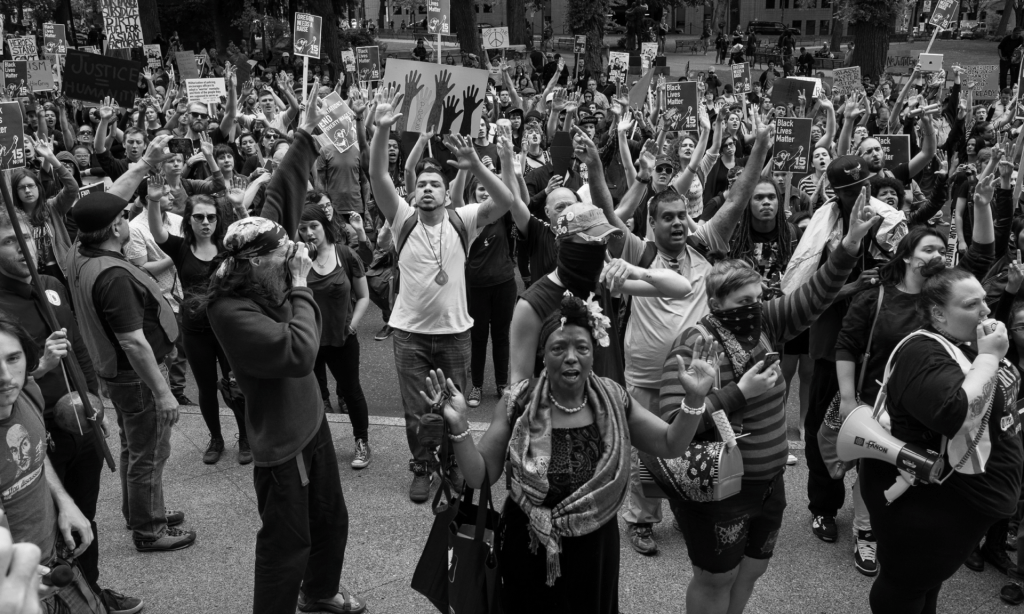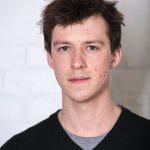Three speakers offer insights about “Policing Justice”
 In November 2022, the city of Portland reached a $250,000 settlement in a federal lawsuit over its police bureau’s use of tear gas and other crowd control devices during the racial justice protests that rocked its streets in 2020. The extended protests, in reaction to the murder of George Floyd, lasted longer in Portland than in any other city in America. Protesters were met with over 6,000 instances of police use of force.
In November 2022, the city of Portland reached a $250,000 settlement in a federal lawsuit over its police bureau’s use of tear gas and other crowd control devices during the racial justice protests that rocked its streets in 2020. The extended protests, in reaction to the murder of George Floyd, lasted longer in Portland than in any other city in America. Protesters were met with over 6,000 instances of police use of force.
These incidents served as a point of departure for Nina Amstutz, associate professer of the History of Art and Arhcitecture, to explore Portland’s history of policing in relation to racial, environmental, spatial, and juvenile justice in her curated exhibit “Policing Justice” at the Portland Institute of Contemporary Art, February 23–May 12, 2024.
The Policing Justice exhibit examines police violence in Portland and its relationship to longer local and national histories of oppression. Local artists and activist groups will reflect on these situated histories through a series of commissioned installations, including work by Don’t Shoot Portland, Michael Bernard Stevenson in collaboration with Blue, and Cleo and Kayin Davis in collaboration with Robert Clarke and Kim Moreland. The exhibition will also showcase a recent investigation by the British research and arts organization, Forensic Architecture, into the Portland Police Bureau’s use of tear gas against protesters in 2020 and its environmental and health impacts.
Related to the exhibit and her winter term class ARH 407/507 Making the Exhibition: Policing Justice, Amstutz has organized a mini lecture series featuring three nationally and internationally recognized artists: Alfredo Jaar, Sandy Rodriguez, and Robert Trafford. These lectures will flank the exhibition opening on February 23, which also includes a panel discussion with visiting and local artists in Portland, moderated by local journalist and activist Mac Smiff. The guest speakers will also meet with Amstutz’s students in class.



On Thursday, February 15, 2024 Sandy Rodriguez, whose work focuses on ongoing cycles of violence on communities of color in the Los Angeles area and along the southwest US-Mexico border, will give a talk titled “Codex Rodriguez-Mondragón.”
Alfredo Jaar, a Chilean-born artist who creates installation art that responds to socio-political issues and war, will give his talk “Teach Us to Outgrow Our Madness” on Wednesday, February 21.
Robert Trafford is a research coordinator with Forensic Architecture. His investigative work has spanned from police violence against U.S. protesters to the extrajudicial killing of civilians by Cameroon’s special forces. He will speak on “Forensic Architecture: Art and Activism against State Violence” on Monday, February 26.
The “Policing Justice Lecture Series,” presented by the Department of the History of Art and Architecture, is cosponsored in part by the Oregon Humanities Center’s Endowment for Public Outreach in the Arts, Sciences, and Humanities; The Mark Sponenburgh Endowment; The Sally Claire Haseltine Endowed Fund in Art History; and the Davis Family Art Endowment.
All lectures will take place at 4 p.m. in 115 Lawrence Hall and will be livestreamed and archived on YouTube: youtube.com/@ISMediaServicesUO. For information, contact namstutz@uoregon.edu